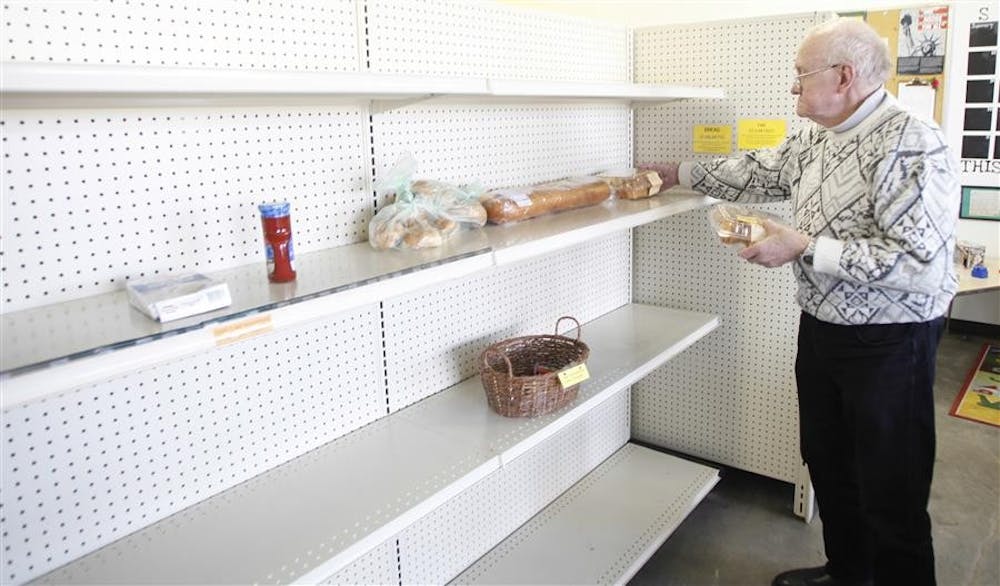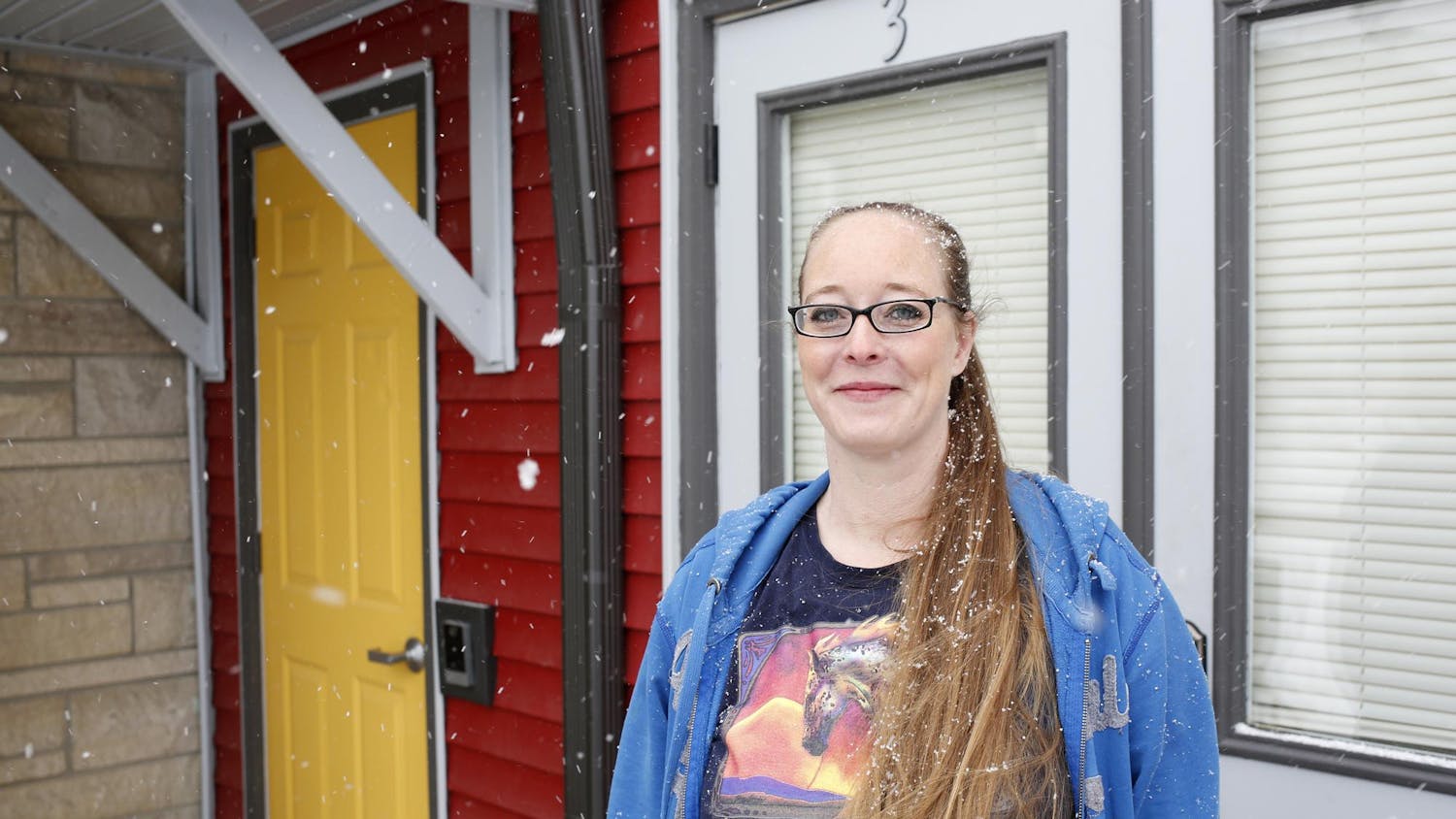After a $5-billion cut to the national food stamp programs in November and talks of more cuts underway in Washington, Bloomington food pantries are doubling efforts to meet growing demand.
In 2013, the Supplemental Nutrition Assistance Program provided benefits — commonly called food stamps — to 47.6 million low- and no-income citizens. The 2009 Recovery Act temporarily boosted funding to SNAP in a provision that expired Nov. 1, 2013.
After the $5-billion cut, food banks across the country saw demand for their services leap upward. In a press release last Wednesday, Food Bank for New York City said city pantries saw more visitors just after the SNAP cut than after Superstorm Sandy, with almost half of the pantries running out of food to distribute.
The situation in Bloomington is harder to pinpoint, said Vicki Pierce, executive director of Community Kitchen of Monroe County. Community Kitchen offers emergency meals and food assistance programs.
A number of factors affect demand for these services, Pierce said.
“There’s not incredible consistency month to month,” Pierce said. “It’s hard to compare October to November to December, although each of those months was higher than last year’s.”
Pierce said there are two distinct groups of visitors at Community Kitchen — regulars who work the free meals into a longer-term plan of food assistance and newcomers who find themselves in unexpected crises.
The latter often come to the kitchen when pantries and SNAP cannot feed them.
“This tends to be a last-ditch effort for those folks,” Pierce said. “By the time they’re desperate enough for us, it takes longer for them to get back on their feet.”
According to the Indiana Family and Social Services Administration, after a year of largely constant numbers, SNAP support payments in Monroe County fell by almost 9 percent after November’s cuts — a decline of more than $120,000 in total issuance.
Meanwhile, the number of area SNAP recipients has remained virtually unchanged, and local food pantries are serving more visitors than ever.
Pierce said Community Kitchen saw a more than 9-percent increase in overall services last year, with a steep spike of 50 percent between May and December 2013 in its Backpack Buddies program, which stocks backpacks with weekend food supplies for schoolchildren.
“That’s one of the programs that seems to me a cut in food stamps would affect,” Pierce said.
Mary Beth Harris, director of development at local food pantry Mother Hubbard’s Cupboard, said while Mother Hubbard’s did anticipate an increase in visitors due to SNAP cuts, the cut’s impact is difficult to measure based on the pantry’s relocation and general expansion of services last year.
Overall, 2013 saw Mother Hubbard’s Cupboard’s highest-ever distribution with 135,000 bags of groceries — an increase of 25 percent from its 2012 total, Harris said.
December 2013 specifically was up 72 percent from December 2012.
The consensus is that while Bloomington food banks and pantries are surviving, directors see nowhere for the numbers to go but up. Help and donations are always needed.
“We’re doing OK,” Pierce said about Community Kitchen. “We’re doing the best we can do.”
Local pantries now face the prospect of deepening SNAP cuts, an issue under debate now in the nation’s capital.
The New York Times reported that this month during long-delayed farm bill negotiations, Congress proposed another $8 billion in cuts to SNAP during the next 10 years, down from original conservative pushes for $40 billion.
The House of Representatives is expected to vote on the agreement today.
Cuts to SNAP may strain food pantries

Get stories like this in your inbox
Subscribe




